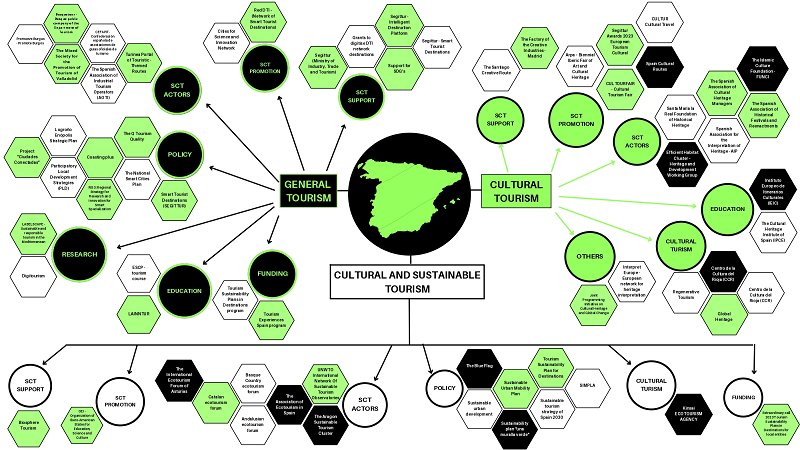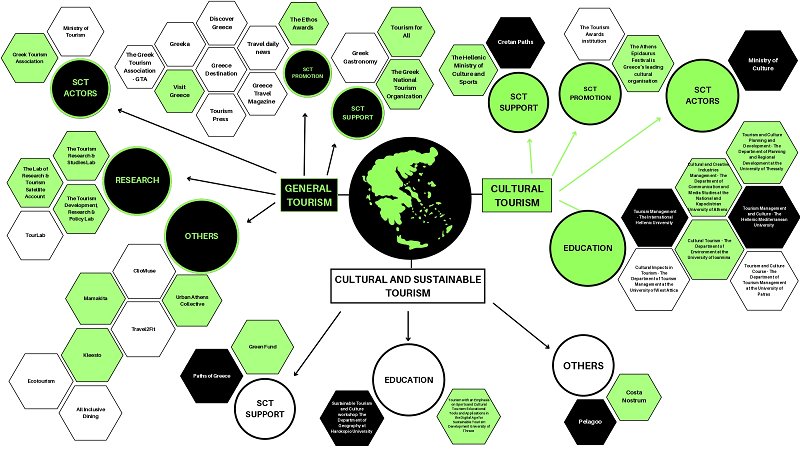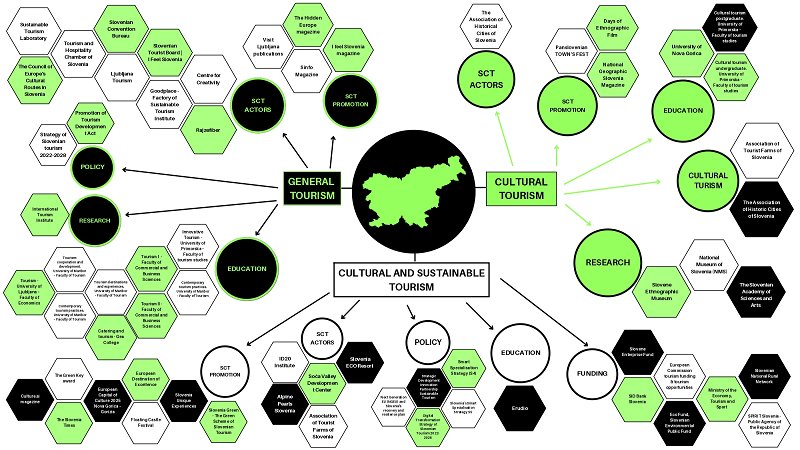Mapping ecosystem
SCT LANDSCAPE
A country’s SCT landscape is perhaps best understood using the concept of an ecosystem: stakeholders involved in SCT can be viewed as interdependent organisms which share a habitat, in this case with the common goal of carrying out cultural tourism activities of economic relevance.
Based on this ‘ecosystem concept’, CulturalDeTour’s project partners collected data regarding SCT stakeholders, their relationships to one another, and the wider institutional environment in Slovenia, Greece and Spain.
Cultural and sustainability stakeholder mapping in Spain
ANALYSIS
This data was then carefully analysed in terms of each country’s particular strengths, weaknesses, threats and opportunities. Together, the results of this ecosystem mapping exercise and the subsequent SWOT analysis form the basis of this report, which aims to draw out common trends and differences, as well different levels of development and needs, between the SCT ecosystems in Greece, Spain and Slovenia.
Cultural and sustainability stakeholder mapping in Greece
THE FINDINGS
The findings of this report suggest that SCT practices offer potential new solutions to some of the most pressing problems facing tourism SMEs in Europe, as well as promising opportunities for sustainable growth. Ultimately, this report argues that the future of European cultural tourism lies with an SCT approach driven by values such as community, innovation, and regeneration.
Cultural and sustainability stakeholder mapping in Slovenia


